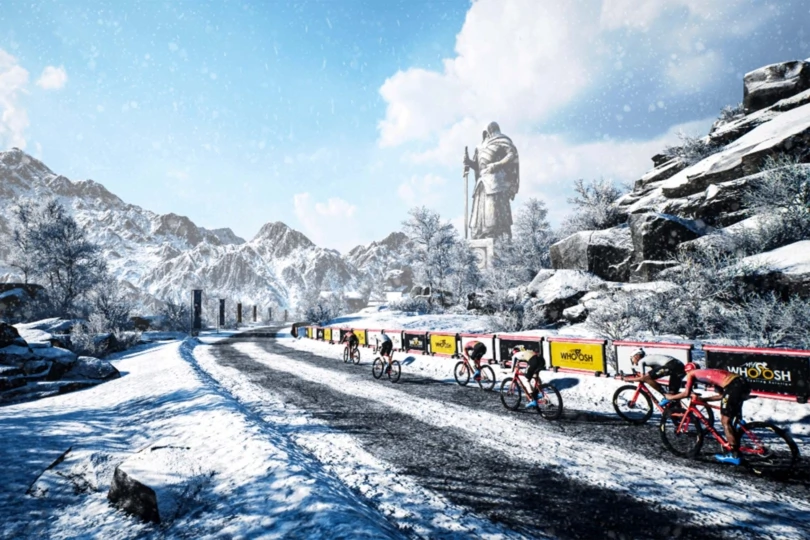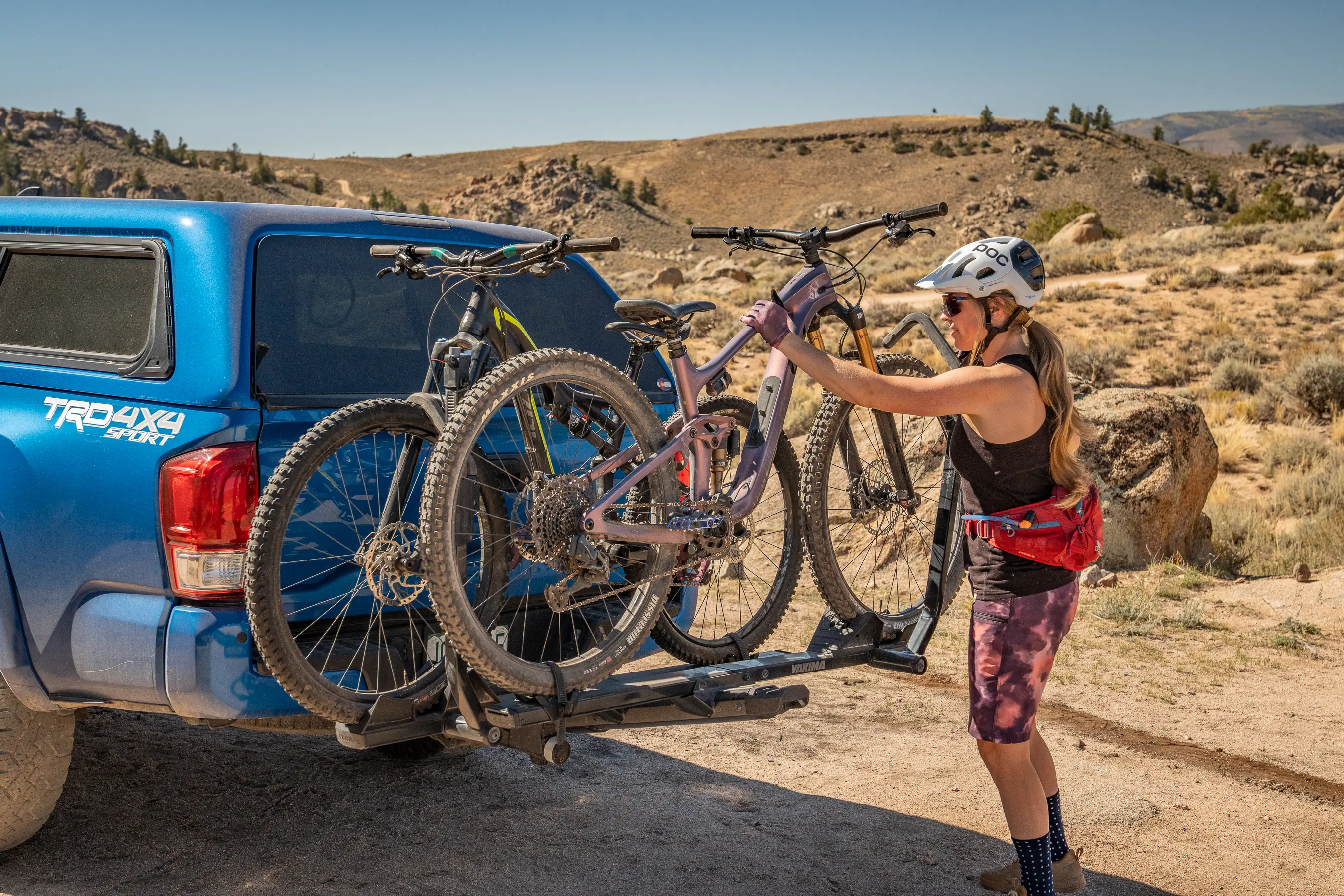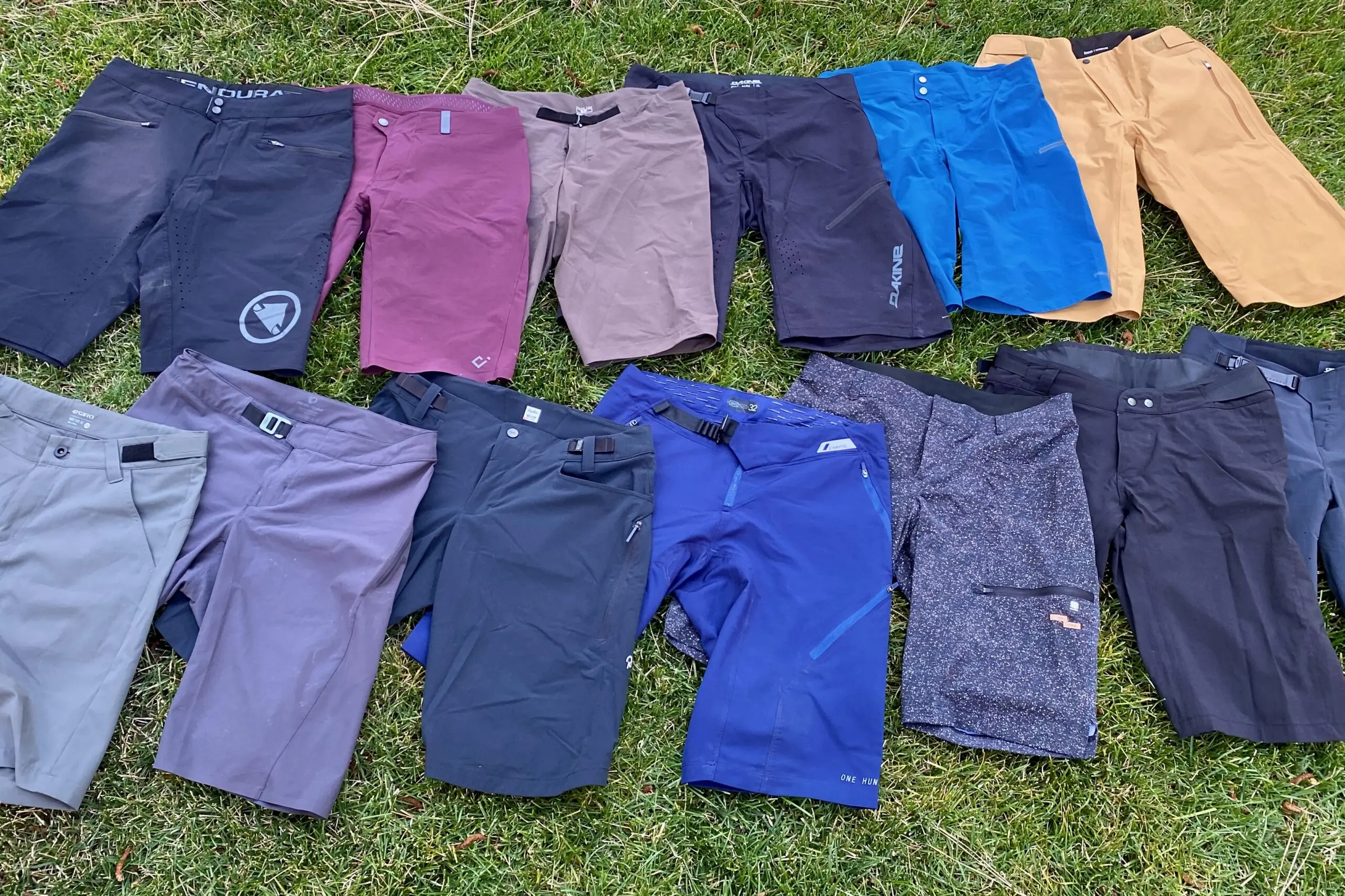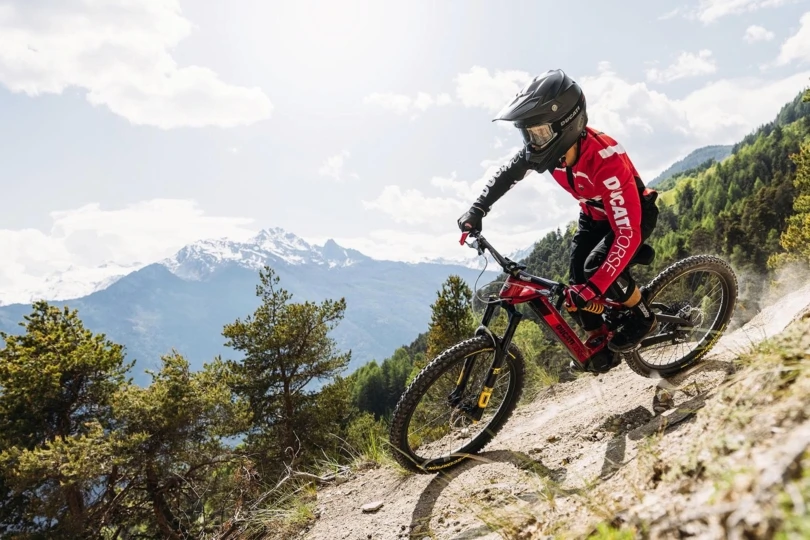Niner gives us a beautiful steel gravel grinder in the RLT 9. Our writer threw his leg over it for a review.
I really want to love steel. My bike racing chops were forged in the ’70s and ’80s, racing in the U.S. and Asia on coveted steel-frame European bikes.
Several years ago, we were visiting our hometown. On that visit, by a freak accident, I discovered one of my original sponsor bikes: a thoroughbred Italian steed adorned with Campy Super Record components. But at this stage in its life, it was rusting away, it sported a sloppy purple spraypaint job, and overspray covered the components.
I immediately took possession of the bike and spent thousands of dollars restoring it. The anticipation of riding it for the first time was overwhelming; all of the miles, friendships, races, and suffering.
After half a spin around the block, I determined that I like my contemporary, lightweight carbon fiber bikes so much more. What a disappointment.
Fortunately, the new Niner RLT 9 Steel ($5,000) puts Chromoly back under the saddle in a new and better way. It gives riders like me a cutting-edge option in old-fashioned steel.
Why the RLT 9 Steel Is a Standout
When Niner confirmed that an RLT 9 Steel was on the way, I based my expectations on the experience with my Italian thoroughbred (which is to say my expectations were low).
Unpacking the RLT 9 Steel, one immediately notices the finish — and finishing touches. Niner’s website simply doesn’t do this bike’s finish justice. Everywhere you look, it’s like an industrial designer got together with a graphic designer and asked, “How can we make this bike come to life?”
Standouts are the multiple graphic touches and multiple braze-ons. If I wanted to load a bike and take off on the Continental Divide Trail, which runs near our home in Durango, Colorado, this would be an exceptional tool for the job. Just how many braze-ons? Think mini-van loaded with cupholders and flatscreen TVs.
Geometry-wise, Niner nailed it with this bike. Many gravel-specific bikes rock a ridiculously low bottom bracket drop. While this brings stability, it also results in crank arm and pedal strikes. At 73 mm, the Niner is in the realm of cyclocross bike bottom bracket drop — which is to say it’s designed for clearing obstacles.
While the bottom bracket is on the high side, the bike’s wheelbase and fork rake made for a super comfortable ride on all but the chunkiest of singletrack and gravel — environments where a hardtail mountain bike would excel.
Another benefit of the shallow bottom bracket drop is that the RLT Steel will thrive with narrower tires. If I were to own this bike, I’d likely outfit it with 33mm tires instead of the 40mm Schwalbe tires it comes with.
If you did this with, let’s say a Specialized Diverge, which has a bottom bracket drop of 85 mm, pedal strikes would be frequent when cornering or clearing curbs. In all fairness to the Diverge, we understand that the bottom bracket drop on future generations will not be as severe. However, for now, that’s the configuration.
Niner RLT 9 Steel Performance
I wasn’t expecting much given the RLT 9 Steel’s weight. At 24 pounds for a quasi-premium platform, it’s a tank.
Interesting enough, when sprinting on flats, Niner’s Five Star build kit, featuring Stan’s No-Tubes Grail CB7 Pro carbon wheels, accelerated with authority. At a svelte 1,277 g, the wheel set’s lack of rotating weight effectively masked the bike’s overall weight.
At 1,277 g, they are very much at the light end of the spectrum but proved to be very robust structurally. It’s a great job by Stan’s on the engineering side, and Niner for speccing these wheels.
Where the RLT 9 Steel suffered was in climbing. Durango and the Animas Valley are surrounded with gravel climbs of up to 4,000 feet. Hitting a climb was like throwing out an anchor. It was not unlike driving my 20-year-old, hunk-of-steel 4Runner. It needs a runway to merge onto an on-ramp.
However, when it comes to gunk-holing up one of our many forest service roads, which are really a loose collection of randomly sized rocks, the 4Runner excels and never lets me down. The RLT 9 Steel exudes that same level of dependability. That may make up its performance deficit for many.
Trimmings
Shimano’s GRX Gravel group is genius. The first thing that I noticed was the touchpoints. Its larger contact points inspired confidence on rough terrain. The brake levers are just works of anatomical art.
Shifting performance was on par with top-end electronic systems that outfit my other rides, yet this is a mechanical system. Braking was excellent, with superb modulation even on descents of several thousand feet, often in places where few people go. These are places where a crash could be a miserable survival ordeal.
One particular aspect of Shimano’s GRX Group that I particularly like is the ability to run a 2X. Twelve-speed cassettes come close to covering the range of gears for everything from flats to extended climbs.
However, as cycling legend Wayne Stetina commented in a previous article, “Once you have adequate high-low range for hills, the gradual grade changes render 1×12 biomechanically worthless for pedaling efficiency. The steps are always too large to find the ‘right’ gear.”
If you have 5,000 feet of climbing, composed of climbs of several hundreds of feet at a time, that physiological cost is not as profound. If that 5,000 feet of climbing is in one continuous effort, 1X systems are often a compromise for some percentage of the time.
Even if you don’t gravitate toward Niner’s offerings, Shimano’s GRX group is worth seeking out.
Should You Purchase This Bike?
If you love 4Runners, the RLT 9 Steel might be your perfect arrow. It feels solid and exudes the confidence that it will take you there and back. Although it may not be the fastest or sportiest ride.
No doubt, when we were running 19mm tires at 120 psi, there was a certain, satisfying resonance to a fine Columbus or Reynold’s frame. What I find is that when tires get about 33 mm or above, any unique frame material resonance is canceled by the dampening of wider tires, inflated to lower pressures.
In that case, you might as well go for the lighter option. And in Niner’s line, the all-carbon RLT 9 RDO is the alternative.
Do you like steel’s sustainability? Well, that’s largely a myth. No, you can’t “recycle” carbon fiber. You can’t make a new fly rod from an old fly rod, for example. But those fibers can be used in a variety of other products — such as orthotics, prosthetics, whisker-molded brake levers, compression-molded car parts, and others — where the material’s structural integrity is not as critical.
This is due to carbon fiber being a continuous fiber. When you repurpose, those fibers are cut, shortened, and compromised, with structural properties suffering 20-50 percent. A few cradle-to-cradle scientific studies exist that address the nuances of carbon fiber’s sustainability. However, that’s not the scope of this article.
Repairability? Again, carbon fiber is no pig. If a steel frame is damaged, often the entire tube has to be removed and reinstalled and repainted. With carbon, it’s a matter of assessment, prep, and the application of a carbon fiber patch. Paint is optional and based on aesthetics.
Still, steel has a following. And that’s good and fine. At the end of the day, most purchases are emotional decisions, not logical ones. If I wanted a bike that mimicked the emotional attachment that I have to my 4Runner, the RLT 9 Steel would be an excellent match.
I do love the do-anything, go-anywhere geometry of the RLT 9 platform. And Shimano’s GRX Group is brilliant. How much do I like it? While I returned the $5,000 RLT 9 Steel, I wrote a slightly larger check and ordered the all-carbon RLT 9 RDO, Shimano GRX-equipped steed as my perfect do-anything, go-anywhere bike.
Your mileage may vary.












